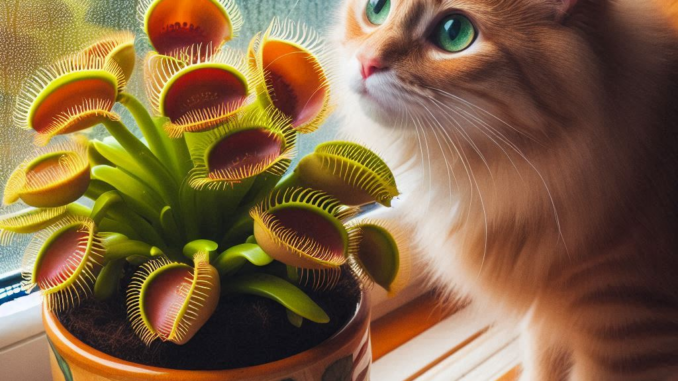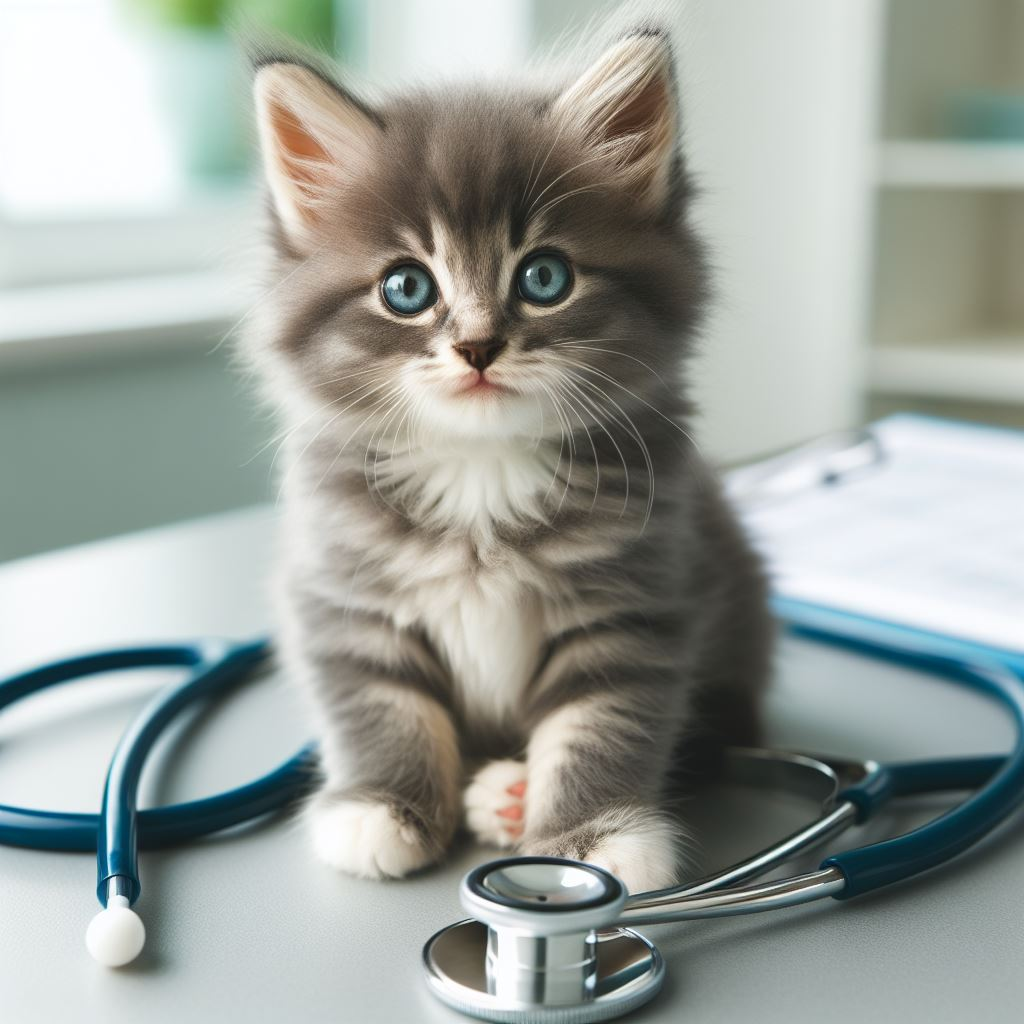
Are Venus Fly Traps Poisonous to Cats?
Venus fly traps are fascinating plants that capture the imagination with their unique insect-catching ability. As a cat owner, you might worry about your feline friend’s safety around these intriguing plants. In this guide, we’ll explore whether Venus fly traps pose any danger to cats and how you can ensure your curious kitty and these captivating plants can live together peacefully.
Quick Answer
Venus fly traps are not poisonous to cats. If your cat nibbles on the plant, it won’t be harmed. However, it’s still best to keep the plant out of reach to protect both your cat and the delicate Venus fly trap.
Understanding Venus Fly Traps
What is a Venus Fly Trap?
Venus fly traps are small meat-eating plants that naturally grow in the wetlands of North and South Carolina. They have special leaves that form traps to catch bugs. These traps help the plant get extra food because the soil where they grow doesn’t have many nutrients. Each trap has tiny hairs that, when touched multiple times, make the trap close around its prey.
How Venus Fly Traps Grow
These plants need specific care to thrive:
- Lots of sunlight
- High humidity
- Soil without many nutrients
- A diet of insects
- Watering with distilled or rain water to avoid too many minerals building up
Are Venus Fly Traps Safe for Cats?
The Good News: They’re Not Toxic
Here’s something that might make you feel better: Venus fly traps won’t poison your cat. If your curious kitty takes a bite of the plant, it won’t get sick. The plant’s sweet liquid (nectar) and leaves don’t have any harmful substances that could make your pet ill.
Things to Watch Out For
While Venus fly traps won’t hurt your cat, there are a few things to keep in mind:
- Trap Closing: If your cat triggers a trap, it won’t harm them. The traps are meant to catch bugs and aren’t strong enough to hurt a cat’s paw, nose, or whiskers.
- Plant Health: If the traps close often without catching food, it can weaken and eventually kill the plant. Cats playing with the traps might accidentally harm the delicate plant parts.
Creating a Safe Space for Both
Keeping the Plant Out of Reach
To protect your Venus fly trap and your cat, try putting the plant where your cat can’t get to it. Here are some ideas:
- Use high shelves or hanging pots to keep the plant away from curious paws.
- Think about using small greenhouses or glass cases with locks to fully cover the plant.
Giving Your Cat Other Things to Do
Cats are naturally curious and might be drawn to the movement of Venus fly traps. To keep their attention elsewhere:
- Provide cat grass or other safe plants that your cat can chew on.
- Get some fun toys that your cat can play with to keep them busy and less interested in your plants.
A Personal Story
When I first brought a Venus fly trap home, my cat, Whiskers, couldn’t stop staring at it. She would watch the traps close with big, curious eyes. But after a while, she realized her toys were much more fun to play with. I put the plant on a high shelf where Whiskers couldn’t reach it, and since then, both the plant and my furry friend have been living happily side by side.
The Science Behind Venus Fly Traps
Venus fly traps are amazing examples of how plants can adapt to their environment. Here’s a closer look at how they work:
The Trap Mechanism
The trap leaves of a Venus fly trap are a marvel of nature. Each leaf has two lobes that snap shut when triggered. Here’s how it works:
- Trigger hairs on the inner surface of the trap are sensitive to touch.
- When an insect touches these hairs multiple times within about 20 seconds, it triggers the trap to close.
- The trap snaps shut in less than a second, one of the fastest movements in the plant kingdom.
Digestion Process
Once the trap closes, the Venus fly trap begins to digest its prey:
- The plant releases enzymes that break down the insect’s soft tissues.
- This process can take 5-12 days, depending on the size of the prey.
- After digestion, the trap reopens, ready to catch its next meal.
Comparing Venus Fly Traps to Other Plants
While Venus fly traps are unique, they’re not the only carnivorous plants out there. Let’s compare them to some other interesting plant species:
| Plant | Trapping Method | Toxic to Cats? |
|---|---|---|
| Venus Fly Trap | Snap trap | No |
| Pitcher Plant | Pitfall trap | No |
| Sundew | Sticky trap | No |
| Lily | Not carnivorous | Yes |
Tips for Growing Venus Fly Traps
If you’re thinking about growing your own Venus fly trap, here are some helpful tips:
- Light: They need lots of bright, direct sunlight. At least 4 hours of direct sun daily is ideal.
- Water: Use distilled water, rainwater, or reverse osmosis water. Tap water can harm them.
- Soil: Use a mix of peat moss and sand. Never use regular potting soil.
- Feeding: They don’t need to be fed if grown outdoors. Indoor plants might need the occasional bug.
- Dormancy: These plants need a winter rest period with cooler temperatures and less light.
Wrapping Up
To sum it all up, Venus fly traps are safe for cats. They won’t poison your furry friend if they take a curious nibble. However, it’s still a good idea to keep these plants out of reach. This will protect both your plant from damage and your cat from any potential digestive upset from eating unfamiliar plant material.
With the right setup, you can enjoy the wonder of Venus fly traps while keeping your cat safe and happy. Remember, every cat is different, so always keep an eye on how your pet interacts with new plants in your home.
What to Do Next
- If you have a Venus fly trap, consider moving it to a safe spot where your cat can’t reach it.
- Think about getting some cat-friendly plants for your feline friend to enjoy.
- Always watch your cat around new plants and call your vet if you notice any unusual behavior.
Do you have any experiences with cats and Venus fly traps? Or maybe you have questions about keeping other plants with pets? Share your thoughts in the comments below. Happy plant growing and pet parenting!


Leave a Reply